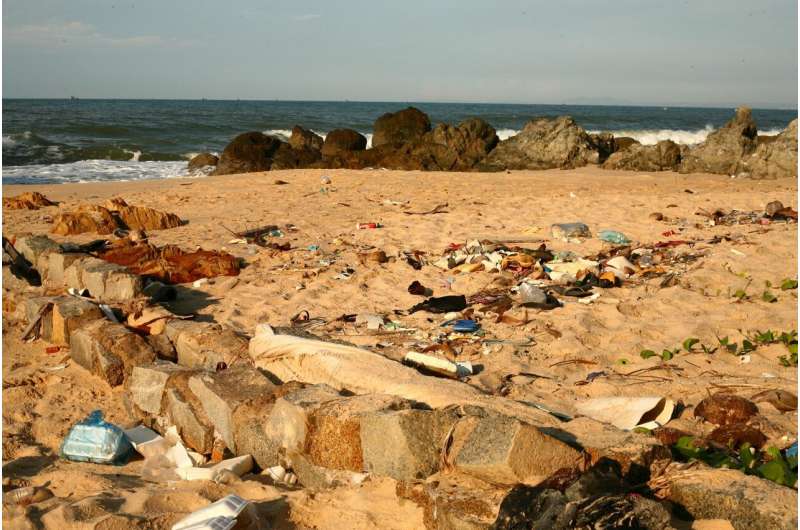
A team of researchers with
members affiliated with institutions in Germany, Switzerland and the U.S. has
created a model that they claim could be used to achieve net-zero-emission
plastics by 2050. In their paper published in the journal Science, the
group outlines their model and requirements for implementation.
A host of studies has shown that the production and use of plastics has become a significant environmental problem as it breaks down into microplastics, it makes its way into virtually every water source on the planet, resulting in health problems for organisms. Production of plastic is also a significant contributor to global warming due to the gasses emitted during manufacture. In this new effort, the researchers analyzed the data produced by over 400 research efforts aimed at solving the plastics problem and developed a model that they say could lead to a net-zero-emission-plastic world by 2050.
The model implements a cycle built around combining recycling of plastics with chemical reduction of the carbon dioxide they emit when they are burned or collected from biomass. They suggest a recycling rate as low as 70% would be sufficient to reach net-zero emissions, which would result in energy savings of 34 to 53%. They also suggest that the operational costs involved would be on a par with other carbon-capture processes. They further suggest that the cost savings associated with implementing their model globally would amount to approximately $288 billion annually. They point out that production of plastics now accounts for approximately 6 percent of global greenhouse gas emissions and note that current forecasts suggest that the number could grow to 20% over the next 30 years if things continue as they are now. They conclude that the technology exists to solve the plastics problem—all that is needed to solve it is the will to do so.

 Previous page
Previous page Back to top
Back to top







